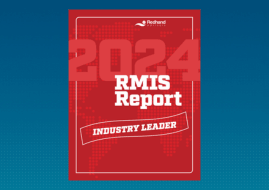
Jun 06, 2024 — The fall of the Roman Empire was a busy time. For over a century, huge mobs of people — entire nations of related tribes of Alans, Goths, Franks, Germans of every stripe and all their cousins — moved around Europe, fleeing invasions, seeking better farmlands and better weather, or both. While we don't see anything quite that dramatic on the horizon here in the US, it's worth noting that we're seeing significant population shifts from state to state and region to region. These shifts involve our employees, our suppliers and our customers, so we might want to pay attention.
For risk purposes, let's focus on the impact on local talent pools. The great majority of our employees still need to work on our premises, whether at a factory, shop, warehouse or office, so the concept of the talent pool is anything but old fashioned, even in 2024. For simplicity we'll just look at states here, but keep in mind that parallel movements are taking place within the larger states as well. We should also note that, yes, the pandemic accelerated these shifts, but much of what we'll look at below can be seen in Census Bureau reports going back to 2014. Indeed, the end of the pandemic has not halted these trends either.
A recent article in Forbes, The U.S. States Losing & Gaining Population [Infographic], notes that the pandemic-inspired flight from New York shows no sign of stopping: "While Covid-19-era losses were even higher in New York, which became the poster child of pandemic city flight, normalization seems to mean that New York is now back on its trajectory of steadily increasing population loss."
California has lost two seats in the House of Representatives due to its relative loss of population following a period of stagnation. Similarly, the informal contest between Florida and Texas to welcome the most newcomers has been widely noted. But did you know that South Carolina is also adding people every day at a similar pace and its neighboring states, North Carolina, Tennessee and Georgia, are not far behind?
Climate change is also a factor. Some recent reports have shown that people are either moving away from or avoiding areas with ongoing climate challenges. Louisiana maybe an example of this factor in action. Fox Business News covered this aspect in an article Millions have moved out of certain parts of the country now designated "Climate Abandonment Areas". While this story looks only at flooding risk, the numbers are not trivial: "Climate Abandonment Areas include 818,000 U.S. Census blocks. Over 3.2 million people have moved away from these areas between 2000 and 2020 due to flooding damage."
The most meaningful data are always local, so this quick overview is no more than a reminder that population patterns are fickle. As we have pointed out in previous issues, your workforce is your greatest risk factor. Looked at another way, your facilities are worth little more than the quality of the people you can hire and retain to work there. Whether you're looking at building new capacity or deciding which existing locations to keep, the local talent pool is a major consideration, and the depth of that pool may be changing right now. If you don't ask the right questions, you won't get the right answers.
At the height of the Empire, Rome — the Eternal City — had a population of well over a million citizens. Three centuries later, the population had shrunk to maybe 40,000. Wars, pandemics and climate change made the difference. Sometimes talent pools dry up altogether.
Author

Dr. Gary Anderberg
Make Gallagher Bassett your dependable partner
When making the right decision at the right time is critical to minimize risk for your business, count on Gallagher Bassett's extensive experience and global network to deliver.

